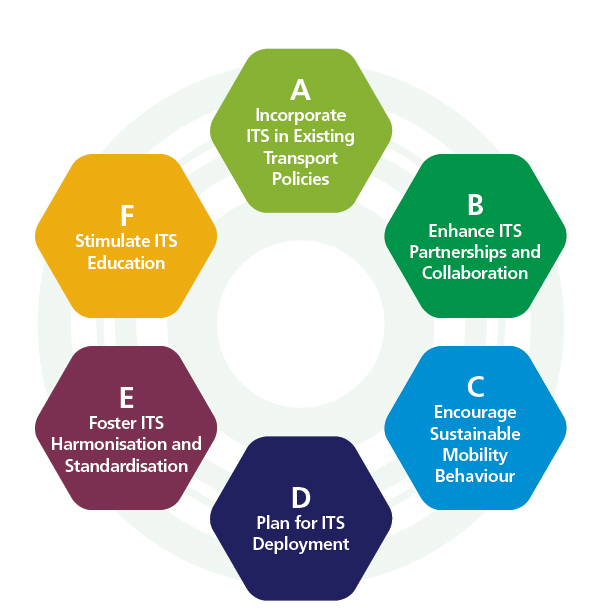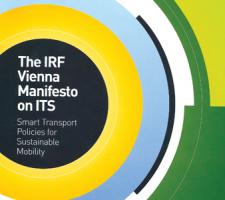
The IRF’s Vienna Manifesto recommends six policy actions to unleash the full potential of ITS and its societal benefits
The International Road Federation has issued a wake up call to government ministers, in the form of its Vienna Manifesto on ITS.
Four years on from coming to a key decision on ITS, the“Around 1.3 million people die every year on the world’s roads, many more suffer grave injuries and millions of families have to live with the trauma of losing a loved one. It is about time the world woke up to this problem and made greater use of ITS technology to help solve it,” said IRF chairman KK Kapila at the launch of the Vienna Manifesto at the 2012
A considerable feat
The Vienna Manifesto comes as the result of a meeting at the 2008 ITS World Congress in New York. The IRF, realising that more needed to be done globally to bring ITS to the attention of government ministers, charged its policy committee with the task of developing the manifesto, drawing in views and expertise worldwide. This is no mean feat, given that more than 70 individuals and organisations contributed to the document’s production.About a year of policy committee meetings on different continents were dedicated to setting the initiative’s remit and terms of reference – the specific objectives of the manifesto. Then followed two years of detailed discussion and drafting of content before a final year of writing and editing.
The outcome is a policy document designed to brief government ministers and their agencies on all ITS has to offer for improving road safety and individuals’ mobility and quality of life. The Vienna Manifesto calls on political leaders to undertake six key policy actions. Under each heading, it also expands on its main recommendations, such as (under A: Incorporate ITS in existing transport policies) the need for policymakers to put in place a comprehensive framework setting out how transport might be improved.
To paraphrase the Vienna Manifesto: Governments’ policy frameworks should address the role of mobility in economic and social development. They should also address the role of technology in keeping mobility sustainable, in reducing fatalities, travel time delays, congestion and environmental impact, while creating jobs and innovation. Policy frameworks should address associated policies, such as investments in public transport or tax incentives that encourage ‘green’ mobility choices; and they should aim to educate the general public about intelligent use of road networks and services available – contributing on a macro level to more sustainable travel patterns.
Next steps
Assessment of countries’ policy frameworks for transport and ITS is expected to be one of the next key aims of the IRF Policy Committee as it considers how to ensure the Vienna Manifesto secures maximum impact. “We have already received positive feedback from a number of government ministers,” says committee chair Josef Czako. “They have told us it is good to have a single document that helps to make ITS more understandable and explain how it can contribute or fit into overall transport plans. The benefits and impacts of ITS have not been so well described before now.”The IRF’s road finance and ITS programme manager Caroline Visser has played a vital role in overseeing the Vienna Manifesto, pulling together the expertise that has contributed to its production. She says the IRF is now in the process of discussing ideas for how to ensure its ITS manifesto does not get left on shelves. “We have received a number of expressions of interest from government agencies and organisations in different countries. We are translating the manifesto into Russian as requested, and the document will be adjusted to suit the particular ITS market and demands of the United States,” Visser says.
“One of the main ideas for discussion will be the introduction of a series of performance indicators, so we can give countries the means for assessing their policy frameworks and measuring implementation. The IRF will continue to help its members roll out and raise awareness of ITS. Its efforts with regards to ITS are certainly not finished with publication of the Vienna Manifesto.”
Charting roadmaps
A further key recommendation of the IRF’s manifesto is governments’ charting of roadmaps for ITS deployment: ‘Sound analysis of the actual deployment situation in a country, state or municipality, in preparation for setting of an ITS strategy, can provide a clear picture of the existing fragmentation of systems and services, and can help bring about greater coherence among deployments,’ the manifesto states.“Everything is available but not enough has been deployed,” says KK Kapila. “The Vienna Manifesto presents a toolkit for how to describe ITS to policymakers, and to help governments implement their ITS plans. It will be followed by key performance indicators to measure this roll out. The IRF is already well known for its world road statistics. We would like to create the same for ITS.”
While emphasis is placed on the role that technology can play in improving road safety, the manifesto also explains what ITS can do for enhancing the environmental performance of transportation, by reducing congestion and fuel consumption, for example, and what it can do to help economic recovery and development. “We now need to sensitize politicians to these realities and persuade them to do something about it posthaste,” Kapila says, while returning to the context of road safety to give an example of how political commitment can bring results: “President Mitterrand started France towards achieving a great reduction in numbers killed on French roads with political willpower. So we are telling politicians: do something and do it now.”






